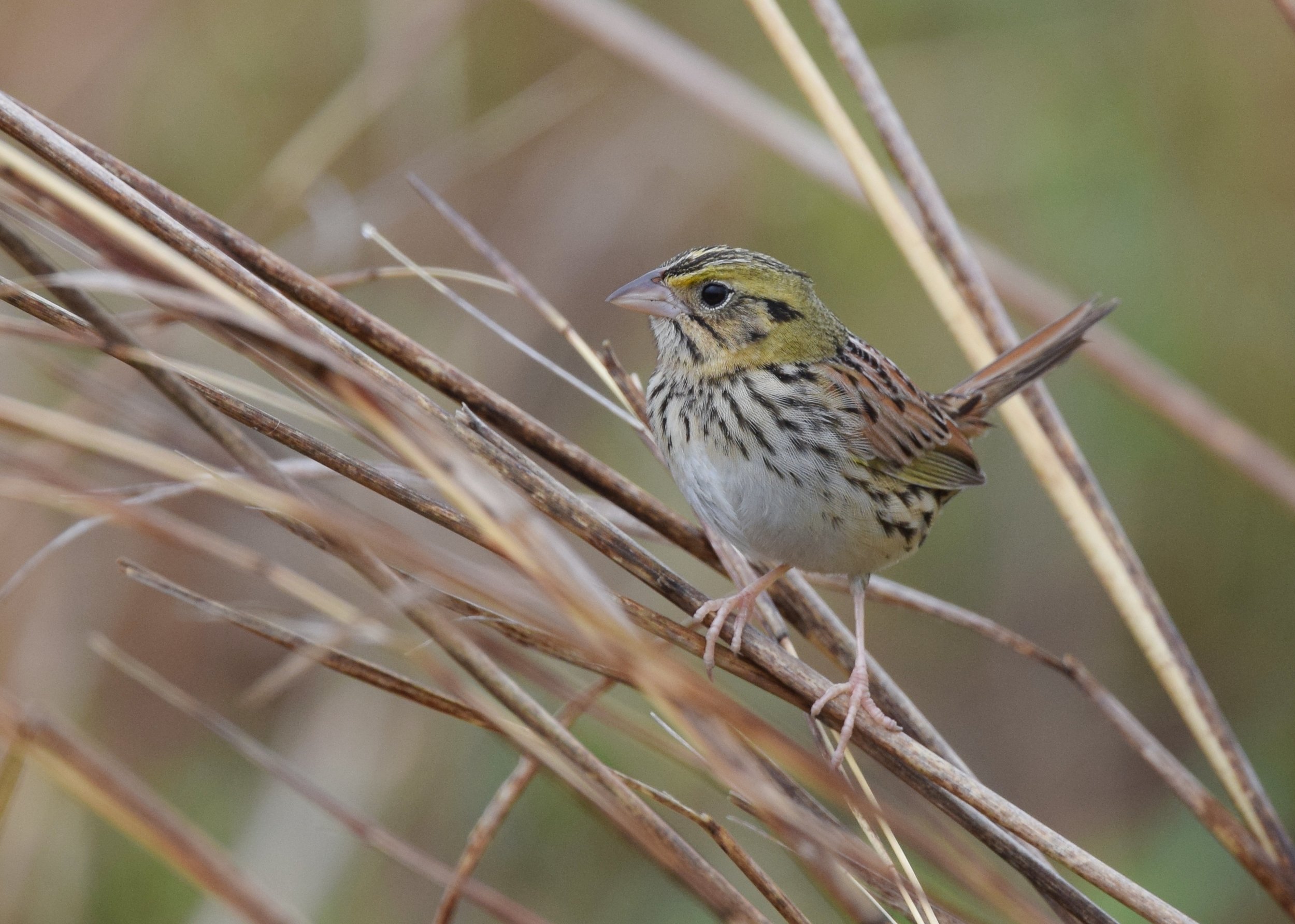Into the Nest: Home, home on the range (Henslow's sparrow style)
Photo by Andy Reago & Chrissy McClarren
The Henslow’s sparrow is one of the trickier grassland birds to study. They are on the smaller side for a sparrow, and spend a lot of time hopping through the litter layer very close to the ground. They often only pop up to perch on high grasses or flowers when singing, and their song is a quick, insect-like buzzing. When they do fly, it is low to the ground, erratic and fluttery- they often appear to crash-land back in the grass.
Photo by JanetandPhil
I love everything about them, especially how hard they are to observe... but that makes information on their behaviors sparse compared to other birds. Out of the 400ish nests we found during my thesis work, only 20 of them were Henslow’s sparrow. Those numbers were with a crew of 12 people searching over three summers! Henslow’s sparrow are threatened in Wisconsin. Their shy behavior and low population numbers make for a hard bird to study.
What we do we know about Henslow’s sparrow territorial behavior? They are often loosely colonial, and territories in Wisconsin are just under an acre in size (Wiens 1969) Males establish their territories in May and early June. They sing to defend their territories, usually while perched on the ground or on grass or flowers. Some studies found that males chased intruder males out of their territories (Sutton 1959), while others did not observe this behavior (Robins 1971). Sometimes Henslow’s sparrow territories overlap with those of savannah or grasshopper sparrow (Piehler 1987).
Henslow’s are socially monogamous (Herkert 2002), with one male and female pairing for each breeding season. The male attracts a female with song: he hops up onto a piece of grass or flower, sings once or several times, and then hops back down into the thicker grass.
Piehler, K. G. 1987. Habitat relationships of three grassland sparrow species on reclaimed surface mines in Pennsylvania. Master's Thesis, West Virginia Univ., Morgantown. Piehler 1987
Robins, J. D. 1971a. A study of the Henslow's Sparrow in Michigan. Wilson Bull. no. 83:39-48.Robins 1971a
Sutton, G. M. 1959. The nesting fringillids of the Edwin S. George Reserve, southeastern Michigan (part III). Jack-Pine Warbler no. 37:76-101.Sutton 1959
Wiens, J. A. 1969. An approach to the study of ecological relationships among grassland birds. Ornithol. Monogr. no. 8:1-93.




